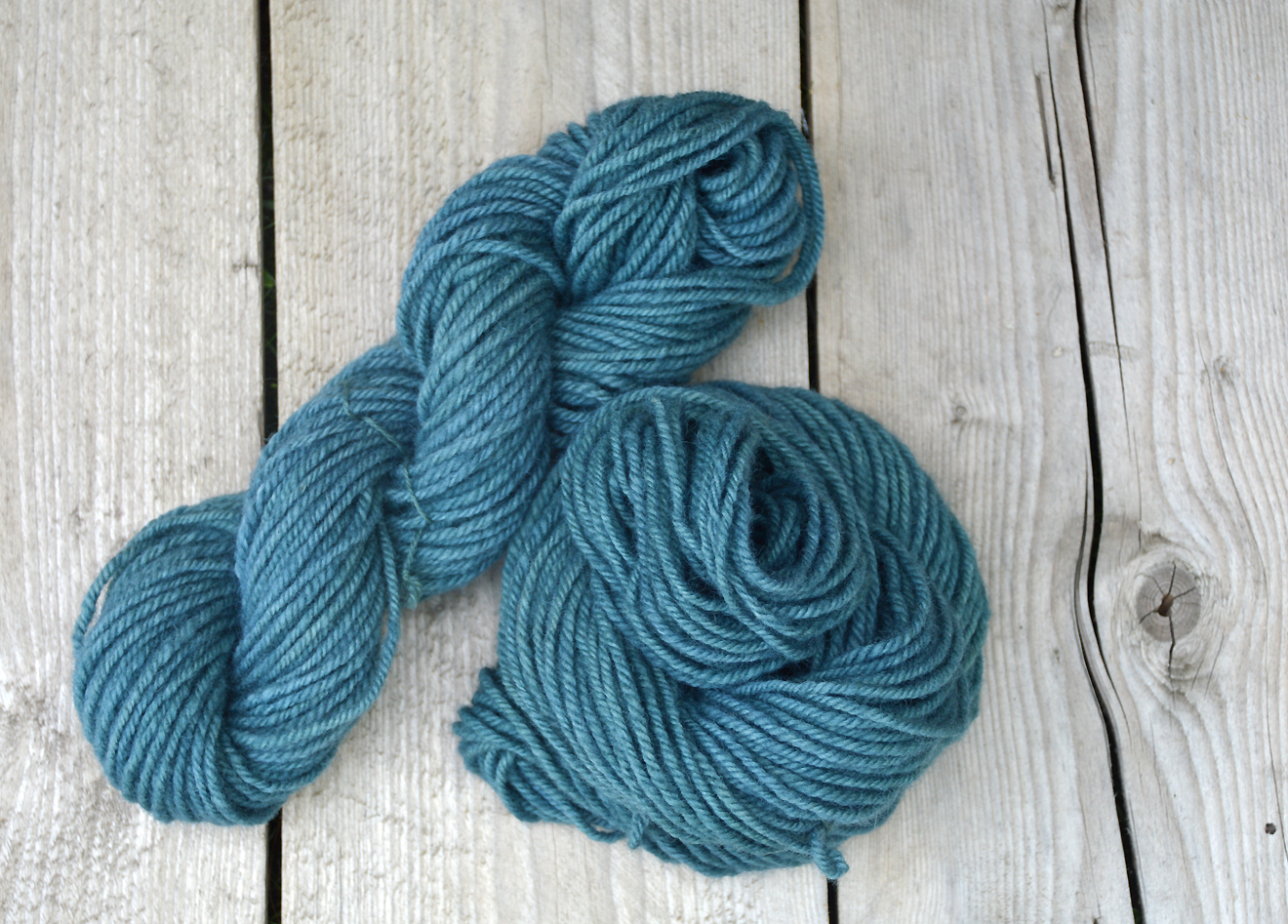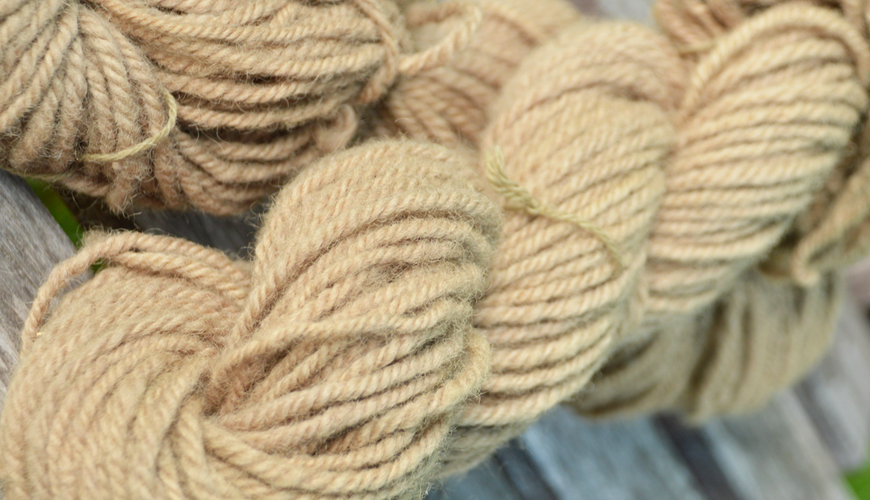I did not feel great about these skeins. In fact, I would be so bold as to say I actively disliked the colour you see in the photo. But learning about not just dyeing, but natural dyeing, is all about successes and failures, and this one I would definitely put in the “failure” camp, at least initially. The nice thing with dyeing, however, is unless you’ve already got a very dark colour, there’s wiggle room (more on that below).
These skeins were some 3 ply Clun Forest that I had spun a few months ago, and while I really liked different aspects of the yarn – the tight twist angle being my favourite – the finished weight ended up being much heavier than I had anticipated. So, as I’m now in the habit of, all skeins I’m not insanely happy with go into the test dye pot pile. Eventually the skeins I am insanely happy with will also go right into the dye pile, I just want to be more assured of what I’m doing first, which is what this whole series of experimentation is about.
Recipe
188g Clun Forest 3 ply
Logwood exhaust
8g Osage extract (4% WOF)
The Process
I used the Logwood exhaust from my previous dyebath. I had taken that yarn out, but kept the pot simmering, and at that point added the extra Osage extract for this bath. I threw in my pre-soaked, pre-mordanted 3-ply Clun Forest and simmered the concoction for 50 minutes at 75-80C. At the 50 minute mark I turned off the stove, and put the dyepot out to cool. In there the yarn rested for another 10-15 minutes, then I pulled out the yarn and rinsed.
I had hoped for an olive drab, or something in that range. However, I got what I referred to in my notes as “pukey khaki”. To say I was not instantly smitten was an understatement. I really did not like this colour, and I could not ever see me using this yarn. I’m not generally against khakis or beiges, but something about this one just rubbed me the wrong way. The Logwood appeared to lend just enough colour to dull the Osage and, to my eye, bring out the worst in both colours.
I had noticed after I initially pulled out the skeins with the first dyebath of Logwood that there was very little run off during the rinse phase. To me this indicates almost all of the Logwood had been brought up into those first skeins which only left just enough in the exhaust to dull the Osage. I tried the same ratio of Osage extract to weight of fibre in another dye bath (more on that in a subsequent post), just to see what the difference would be without that exhaust Logwood in there and the difference with just that tiny bit of Logwood exhaust was quite remarkable.
Fixing Mistakes
Fortunately, the colour was relatively light, which meant that I could overdye and fix the colour somehow. I let it ruminate (as they say) for about a week. I had some chestnut and I figured I could just dye the skeins brown. But then, my interest in indigo got piqued, and I went on the hunt for some of those supplies.

I’ll go into my first foray into indigo in a future post (I’m seriously in love), but what I ended up doing was a quick 5 minute dip in the indigo vat and what came out was pure heaven. I love these skeins now. They are a beautiful petrol blue (one of my favourite colours), and it really solidified the idea in my mind that what you get on a skein with dyeing doesn’t have to become the final result.
What I learned
Crossposted from Dominion Fleece & Fibre
